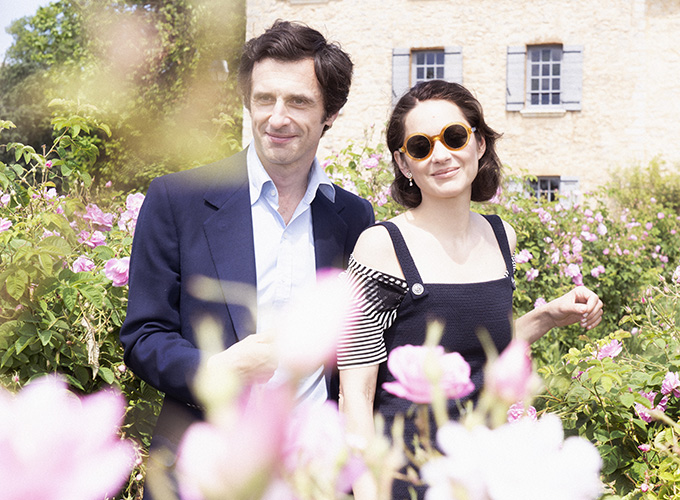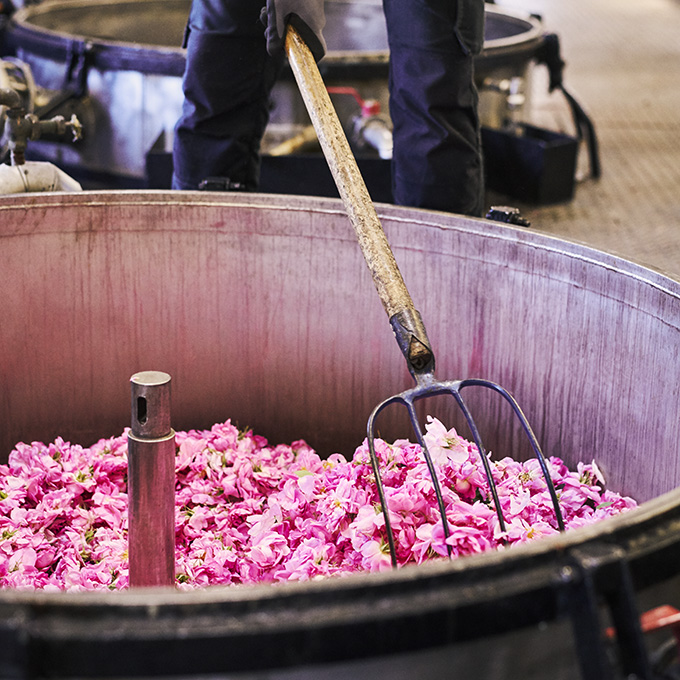With her beauty and elegance, it’s easy to see why Chanel selected Marion Cotillard to be the ambassador for its legendary No. 5 perfume. For the Oscar-winning star of acclaimed films such as Inception, the role made perfect sense given her personal history with the scent. “I must have been 11 or 12 years old when I encountered Chanel No. 5 for the first time. My mother had slipped a bottle into my luggage as a gift for a family I was staying with in England. She explained that this was the essence of French style. I loved it immediately!”
Cotillard’s commitment to Chanel has ethical and environmental dimensions, too. She visited the fields in Grasse, France, where the May rose—a key component of the perfume—is harvested. With her was Chanel’s in-house perfumer, second-generation ‘nose’ of the house Olivier Polge.
“What struck me when I arrived at these fields is the smell, which envelops you,” Cotillard shares. “Then, when you get closer, you discover the delightful colour of the May rose and its powder-pink petals.”

The flowers at this 30-hectare farm, which has been run by the Mul family for generations, can only be harvested during a three-week period in May. They are handpicked individually to avoid the scent losing its intensity, which is unique to this location. “Our roses have a voluptuously honeyed but also fruity scent,” Polge illuminates. “There’s a spicy, lightly peppery aroma, some with the very delicate spiciness of carnation.”
Chanel’s exclusive partnership with the Mul farm dates back to 1987. Explains Polge: “It was my father’s [Jacques Polge, the third in-house perfume-creator for Chanel] idea to work with them, at a time when the idea of the terroir and supporting responsible agriculture wasn’t trendy. Now we know it was visionary. This partnership helps sustain the production of fragrant plants in the Grasse basin.” Indeed, ensuring the sustainability of Chanel’s fragrance production is paramount to the house. “At Chanel, we participate in all the steps involved in producing a fragrance. We never stop furthering our relationship to [farmers’] techniques and know-how,” Polge adds.

It’s a sentiment that Cotillard shares. “For me, it is important to see how this fragrance I’m representing is made. The luxury industry owes it to itself to think about how to create a more sustainable world.”
No. 5 is steeped in over a century of rich heritage, reflected by the long-standing relationship between Chanel and its harvest sites, and the typically generational lineage of skilled harvesters. In this instance, the traditional techniques used to carefully handle the May rose are passed down from parent to child.

For Cotillard, being able to witness the intimacy of this production process first-hand was transformative. “It is something I will take with me, this feeling of being deeply filled with joy. The harvesters were proud to share their passion with me.”
Summing up her visit, Cotillard muses: “There is this very powerful human element that I find moving here. Everywhere you look, there is beauty.”





